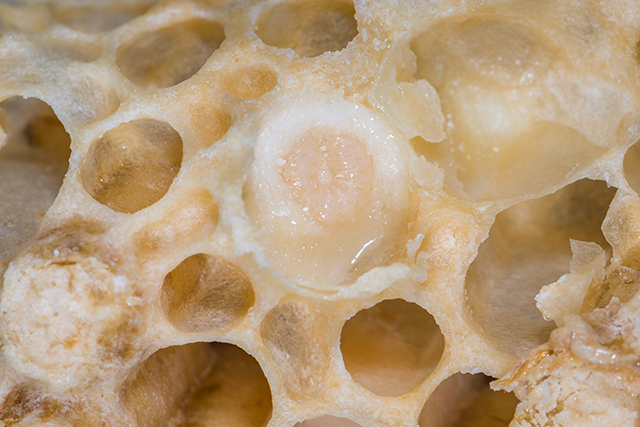High-dose vitamin D dramatically improves psoriasis and vitiligo
08/12/2024 / By News Editors

A pilot study illuminates that high-dose vitamin D significantly improves lesions and depigmentation in psoriasis and vitiligo, respectively. Because Vitamin D deficiency is implicated in the pathophysiology of autoimmune responses, these findings may be applicable to other autoimmune disorders.
(Article republished from GreenMedInfo.com)
Vitamin D: A Hormone Critical to Health
Vitamin D insufficiency is a pandemic affecting nearly half of people worldwide, while one billion people are classified as vitamin D deficient (1). Hypovitaminosis D, or vitamin D deficiency, represents an independent predictor of total mortality in the general population, and conversely, vitamin D supplementation has been illustrated to be protective against mortality (1).
Vitamin D enhances absorption of dietary calcium and phosphorus by 30-40% and 80%, respectively, but its physiological functions extend well-beyond mineral assimilation and balance (2, 3). Vitamin D is known as a pleiotropic hormone, meaning that it elicits diverse and multi-faceted effects. In fact, local vitamin D production governs the expression of up to 200 genes (4). That receptors for vitamin D are found in so many organ systems, including the muscles, intestines, pancreas, and nervous system, illustrates its expansive and far-reaching effects (5).
In particular, vitamin D regulates the cell cycle, suppressing cell division and inducing terminal differentiation in order to generate specialized organ-specific cell types (1). It likewise regulates the pathway of cell suicide known as apoptosis, promoting this process of programmed cell death in neoplastic cell lines to prevent cancer (6). Vitamin D exerts various endocrine effects, such as inhibiting renin and stimulating insulin secretion (1). It also possesses anti-inflammatory and anti-fibrotic effects, and enhances host defense against both invading pathogens and tumor development (7).
The vitamin D receptor complex regulates 3% of the human genome, and about 10% of human genes are directly or indirectly responsive to vitamin D (8, 9). The effects of vitamin D are far-reaching, as demonstrated by the fact that a multitude of human cells, including bone, blood vessel, brain, breast, colon, immune, muscle, prostate, and skin cells express the enzyme 25-hydroxyvitamin D-1 alpha-hydroxylase (9). Also known as cytochrome P450 27B1 (CYP27B1), this enzyme is responsible for catalyzing the hydroxylation of calcifediol to calcitriol, the bioavailable, metabolically active form of vitamin D that elicits effects at a cellular level (40). With regard to vitamin D production, researchers state, “…extra renal intracrine and paracrine 1,25(OH)2D3 synthesis may critically affect the activities of many tissues and organs” (9, p.222).
Vitamin D and Sun Exposure: Friend or Foe?
Sufficiency of vitamin D is contingent upon adequate ultraviolet-B (UVB) radiation (1). Wearing sunscreen of sun protection factor (SPF) 30, a practice encouraged by the biomedical establishment, reduces vitamin D synthesis by over 95% (10). In effect, the synthesis of vitamin D begins when cholesterol in the skin is converted to cholecalciferol in a reaction dependent on sun exposure (1). This biologically inert form undergoes further modifications, in both the liver and kidneys, to form the metabolically active 1,25-dihydroxy vitamin D3, or 1,25(OH)2D3, the main circulating form of vitamin D (1).
The wide-ranging benefits of vitamin D sufficiency may be the biological imperative behind practices of many traditional cultures, which worship the sun as the harbinger and genesis of all life. However, mainstream media, conventional medicine, and the prevailing cultural zeitgeist is to cover up, find the shade, slather your body in sun screen, and for pete’s sake—avoid mid-day sun exposure.
This is despite a prospective study following 38,000 Swedish women for 15 years, where sun exposure was found to be associated with a significant reduction in all-cause mortality (death from any cause), as well as significant reductions in cardiovascular mortality (death from heart attacks, stroke, and coronary artery disease) (11). Further, whereas intermittent sun exposure was correlated with a 60% increased risk of melanoma, chronic sun exposure was protective against this most fatal form of skin cancer (11). Although burning should always be avoided, habitual insulation from the sun is also detrimental.
Vitamin D produces a North-South Gradient in Autoimmune Disease
Deficiency of vitamin D is implicated in a vast array of conditions, including infections, hypertension, diabetes, cardiovascular disease, depression, fractures and falls, and lethal cancers (9; 1). Pivotally, vitamin D, which is critical to immune homeostasis, has also been demonstrated to be deficient in autoimmune diseases such as rheumatoid arthritis, type 1 diabetes, autoimmune thyroiditis, and multiple sclerosis (MS) (12, 1). In fact, studies have found that autoimmune disorders occur more frequently in Northern latitudes where vitamin D levels are lower (13).
Researchers attribute a marked global latitudinal gradient in multiple sclerosis prevalence, for example, to differences in ultraviolet radiation exposure (14). This phenomenon is reinforced by another study that found an inverse relationship between regional solar radiation and hospital admissions for inflammatory bowel disease (IBD), such that locations with greater sun exposure had lower rates of IBD-related admissions (15). Another United States based study similarly concluded that the rate of IBD-related hospitalization was found to conform to this geographical pattern, with significantly more admissions in northern compared to southern states (16). In another study, a greater proportion of individuals living at latitudes of 35° north or higher were diagnosed with celiac disease or elected to eat a gluten free diet compared to those residing in more southern latitudes (17).
Similarly, studies not only demonstrate that lower vitamin D levels correlate with worsened disease activity, relapse rates, and clinical severity in Crohn’s disease, multiple sclerosis (MS), psoriasis, systemic lupus erythematosus (SLE), and rheumatoid arthritis (RA), but vitamin D sufficiency is associated with improved symptomatology and lower frequency of disease onset in autoimmune conditions such as IBD (18, 19, 20).
Vitamin D: A Master Immunoregulatory Hormone
Vitamin D is critical to immune cell homeostasis, proliferation, apoptosis, and the process of self tolerance, or the failure to mount an immune response against self-antigens present on bodily constituents. It similarly exerts regulatory effects on both first line innate, or non-specific immune responses, as well as secondary adaptive immune responses that are deployed later on in an infectious scenario (9, 12, 21).
As previously noted, vitamin D levels have been demonstrated to be compromised in autoimmune disease, and circulating levels of 25-hydroxy vitamin D3 are inversely related to autoimmune disease activity (9, 12, 21). This is due in part to the fact that vitamin D promotes expression of toleragenic FoxP3+ regulatory T cells, a subset of immune cells which prevent dominance of either the Th1, Th2, or Th17 arms of the immune system, all of which can perpetuate autoimmunity (22).
Moreover, vitamin D inhibits activation and differentiation of pathogenic T cells, which are intimately involved in the etiology of autoimmunity (23). According to Finamor et al. (2013), “Intracrine and paracrine action of 1,25(OH)2D3 synthesized within immune cells may control inappropriate activation of interleukin-17-producing cells—the Th17 aberrant response, which may play a major pathogenic role in multiple inflammatory and autoimmune disorders” (9, p. 223). Pivotally, vitamin D serves as an essential component in maintenance of gut integrity, preventing both the intestinal hyper-permeability or ‘leaky gut’ that precedes autoimmune disease and the dysbiotic changes in the gut microbiota that can also mediate gut barrier compromise and initiation of autoimmune mechanisms (24).
Vitamin D supplementation results in significant reductions in inflammatory mediators such as C-reactive protein, an inflammatory acute phase reactant, and matrix metalloproteinases (MMPs), which are proteolytic enzymes that inflict damage by degrading the extracellular matrix (25). Vitamin D also down-regulates, or decreases, expression of pro-inflammatory cytokines—inflammatory cell signaling molecules such as IL-1, IL-17, and IFN-gamma (26).
This hormone also inhibits nuclear factor kappa beta (NF-kB), a master transcription factor that leads to expression of downstream mediators of inflammation (27). Lastly, vitamin D supplementation leads to an increased production of anti-microbial peptides such as beta defensins and cathelicidin, which improve commensal microflora composition, elevate immune response against potential pathogens, and attenuate autoimmune responses (24, 28). Vitamin D deficiency in winter months, in fact, explains the seasonality of epidemic influenza (29).
Psoriasis and Vitiligo: Autoimmune Skin Conditions that Compromise Quality of Life
Vitiligo is an autoimmune disorder characterized by patchy loss of skin color afflicting one percent of the world’s population (30). More than half of individuals suffering with vitiligo develop it before age twenty (30). Vitiligo can be divided into the more ubiquitous symmetrical form, called generalized vitiligo, and a less common segmental variety, which affects one side of the body (30). The former is hypothesized to represent an autoimmune condition targeted against the pigment cells called melanocytes.
Psoriasis, on the other hand, is an inflammatory skin disorder typified by painful and pruritic lesions affecting an estimated 125 million individuals worldwide, or two to four percent of the population (31, 32). Although speculated to have an autoimmune origin, other researchers propose that psoriasis represents an abnormal response to the bacterial microbiota of the skin (33). Approximately one out of five individuals with psoriasis report substantial dissatisfaction with treatment (34). Even when the red scaling plaques are not extensive, subjective accounts indicate that the psoriasis takes a substantial toll on their life (34).
Particularly troublesome are the psychological comorbidities of vitiligo and psoriasis, as the visible manifestations can generate feelings of social stigmatization and marginalization. In fact, a systematic review and meta-analysis of 1,767,583 participants, including 330,207 subjects with psoriasis, demonstrated that patients with psoriasis were twice as likely to exhibit suicidal ideation, and 26% more likely to exhibit suicidal behavior, including suicide attempts and completed suicides (35).
High Dose Vitamin D Induces Marked Improvements in Psoriasis and Vitiligo
In a pilot study, 35,000 IU of vitamin D3 was administered daily to sixteen vitamin D-deficient patients with vitiligo and nine patients with psoriasis for six months in concert with a calcium-restricted diet and adequate hydration (9). This represents an enormous amount compared to the 1000 IU a day that many health care providers recommend, and was chosen to overcome the effects of genetic polymorphisms common in autoimmune disease (1).
Dosing of vitamin D3 for autoimmune cohorts often fails to take into account genetic polymorphisms related to defects in vitamin D metabolism (9). Polymorphisms in CYP27B1, which commonly occur in autoimmune disease, confer resistance to vitamin D such that higher circulating level of 25(OH)D3 are necessary for optimal 1,25(OH)2D3 concentrations within immune cells (9). Thus, individuals with this polymorphism may be unable to maintain the concentrations of 1,25(OH)2D3 within immune cells that are necessary for the toleragenic, anti-autoimmune effects of this steroid (9). However, supra-physiological, pharmacologic doses of vitamin D may be able to circumvent this genetic tendency and promote immunomodulation (9).
In this study, dairy products and calcium-enriched foods such as oat, rice, and soy milk were excluded in order to prevent potential calciotropic effects, or soft tissue calcifications that could result from potential vitamin D toxicity (9). Studies indicate that vitamin D conforms to a biphase dose-response curve, whereby both deficient and excessive levels lead to vascular calcifications, or deleterious deposition of calcium in blood vessels that can promote the atherosclerotic changes observed in heart disease (36).
At physiologically appropriate levels, “vitamin D actions include the inhibition of processes that are important for intimal and medial artery calcification such as pro-inflammatory cytokine release, adhesion molecule release, and proliferation and migration of vascular smooth muscle cells” (36, p. 41). However, when vitamin D is either too high or low, it has the potential to promote atherogenic soft tissue calcifications, so researchers restricted dietary calcium as a safeguard to prevent this possibility (9).
After the study duration, significant increases in serum 25-hydroxy vitamin D3 levels were observed, to a mean level of 106.3 ng/mL and 132.5 ng/mL, in psoriasis and vitiligo patients, respectively (9). Levels of parathyroid hormone, a hormone important in bone remodeling that is secreted in response to low blood calcium levels, which promotes release of calcium from bones, were significantly decreased (9). Vitamin D levels were inversely related to PTH levels (9). In fact, Finamor and colleagues suggest reduction in serum PTH concentration may be the best surrogate marker for determining maximal therapeutic dosing of vitamin D3 for autoimmunity (9).
As evidenced by the dramatic photos included in this publicly available study, there was significant improvement in lesion severity in all psoriasis patients as indicated by the Psoriasis Area and Severity Index (PASI) score compared to baseline (9). Further, in fourteen of sixteen vitiligo subjects, 25-75% re-pigmentation occurred (9). In addition, laboratory and clinical manifestations of vitamin D toxicity, such as hypercalciuria, hypercalcemia, and kidney dysfunction, were not observed in any subjects (9). The researchers conclude that, “High-dose vitamin D3 therapy may be effective and safe for vitiligo and psoriasis patients” (9, p. 222)
Looking Ahead: Vitamin D as an Adjunctive Therapy for Autoimmunity
This article should not be interpreted as medical advice or serve as license to take megadoses of vitamin D, as this strategy has not been studied for long-term adverse effects (9). Vitamin D supplementation should be performed under the supervision of a licensed medical physician, dosed according to lab levels, and ideally balanced with other fat-soluble vitamins.
Rather, it demonstrates the potential of this immunomodulatory hormone to induce self-tolerance and arrest autoimmune responses. It should also motivate further research to ascertain whether autoimmune patients require 25-hydroxy vitamin D3 levels above the normal reference range. This notion can be reconciled with findings demonstrating that serum 25-hydroxyvitamin D3 levels under 300 ng/mL are unlikely to pose toxicity risk (37).
It is possible that this data could be extrapolated to other autoimmune diseases, given the prominent role that vitamin D deficiency plays in the pathophysiology of autoimmunity. For instance, a prospective Finnish study following children from birth found that individuals who were administered vitamin D supplements during infancy had an almost 90% lower risk of developing type 1 diabetes (38). Another study highlighted a 62% lower risk of developing MS in individuals with the highest vitamin D concentrations compared to those with the lowest (39).
Therefore, optimizing vitamin D levels, preferably through evolutionarily appropriate means such as sun exposure, should be a clinical priority in autoimmune patients. In addition, vitamin D optimization should be employed as a pre-emptive strategy in people with a family history that predisposes them to autoimmune disorders.
Read more at: GreenMedInfo.com
Submit a correction >>
Tagged Under:
alternative medicine, disease treatments, nutrients, nutrition, psoriasis, skin diseases, Super foods, vitamin, vitamin D, vitiligo, Xpost
This article may contain statements that reflect the opinion of the author
RECENT NEWS & ARTICLES
consumerwellness.info is a fact-based public education website published by consumerwellness.info
All content copyright © 2023 by consumerwellness.info
Contact Us with Tips or Corrections
All trademarks, registered trademarks and servicemarks mentioned on this site are the property of their respective owners.




















